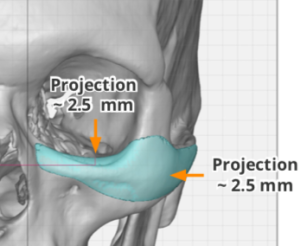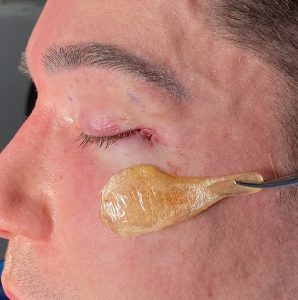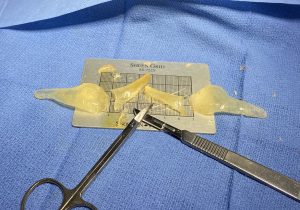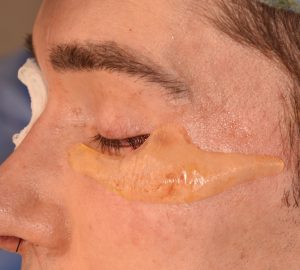Many men seek the high cheekbone look as a method to enhance their facial appearance. I view such augmentation very similarly to the jawline in that it is really a long horizontal facial augmentation effect….with the exception of not crossing the nose area in the midline. (unlike a jawline implant which crosses the chin area and is a very important part of the three corner augmentation effect) The high cheekbone look is called that because it augments the highest part of the cheek and out onto the thin but highly positioned zygomatic arch. This is to be differentiated from standard cheek implants which creates a lower fuller augmentation in the major cheekbone area which is usually only desired by women or either gender affected by significant facial lipoatrophy. (where the face already has a skeletonized appearance)



The only question on secondary infraorbital-malar implant adjustments are whether it can/should be done through the original eyelid incision or done from below intraorally. It can be done either way and that is really up to the patient. Some patients do not want to go through their eyelids again and incur any risk of lower eyelid deformities. (although secondarily this is very unlikely with an established pocket) Then the intraoral approach can be used. While this is rarely an approach for placement of custom infraorbital-malar implants due to the more difficult access for proper pocket dissection, when an established pocket exists there is no risk of implant displacement out of the established pocket.
Dr. Barry Eppley
Indianapolis, Indiana






